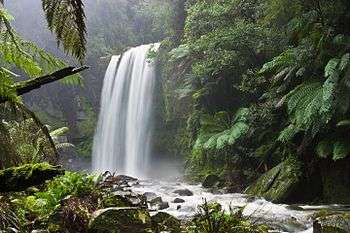Conservation officer
A conservation officer is a law enforcement officer who protects wildlife and the environment. A conservation officer may also be referred to as a(n) environmental technician or technologist, forest ranger, game warden, gamekeeper, investigator, wilderness officer, wildlife officer, or wildlife trooper, all of which fall under the rubric of Canadian National Occupational Classification code 2224.[1]
History
Conservation officers can be traced back to the Middle Ages (see gamekeeper). Their modern history is linked to that of the conservation movement and has varied greatly across the world.
History in New York State
Conservation officers in New York State are known as "environmental conservation officers", or ECOs. The position was created in the late nineteenth century. Originally, they were known as "game protectors". The first game protectors recorded comprised a group of eight men authorized to arrest anyone who killed wildlife on protected land. Their job was to protect game and catch poachers. They also chose to protect streams from pollution. In 1960, their title was changed to "conservation officers", then in 1970, they were renamed "environmental conservation officers", after the Conservation Department and the State Health Department merged to become the "Department of Environmental Conservation". At the same time, the role's status was changed, giving ECOs more legal power than they had previously had.[2]
Education
Conservation officers generally have a degree in areas specific to criminal justice, fish and wildlife management, recreation management, wildlife resources, or a science major related to these. Most start out their careers as a trainee under the supervision of an experienced conservation officer. After graduation and completion of the trainee program, many go on to law enforcement training to become a peace officer. In America, conservation officers must also take and pass the state civil service exam for ECOs.[3]
Conservation officers by region
Canada
United States
- Alaska State Troopers-wildlife enforcement troopers
- Arizona Game and Fish Department
- California Department of Fish and Game
- Colorado Parks and Wildlife
- Connecticut State Environmental Conservation Police
- Illinois Department of Natural Resources, Office of Law Enforcement
- Indiana Department of Natural Resources - Law Enforcement Division
- Kentucky Department of Fish and Wildlife Resources
- Louisiana Department of Wildlife & Fisheries – Enforcement Division
- Maine Warden Service
- Maryland Department of Natural Resources Police
- Massachusetts Environmental Police
- Michigan Conservation Officers
- Minnesota Department of Natural Resources - Enforcement Division
- Missouri Department of Conservation
- Montana Department of Fish, Wildlife and Parks
- New York State Department of Environmental Conservation Police
- New York State Forest Rangers
- North Carolina Marine Patrol[4]
- North Carolina Wildlife Resources Commission
- Oklahoma Department of Wildlife Conservation
- Pennsylvania Fish and Boat Commission
- Pennsylvania Game Commission
- Texas Parks and Wildlife Department
- Utah, Dept. of Natural Resources, Wildlife Division
- Virginia Department of Game and Inland Fisheries
- Virginia Department of Conservation and Recreation, Division of State Parks
- Washington State Department of Fish and Wildlife
- Wisconsin Department of Natural Resources
- Wyoming Fish and Game Warden service[5]
References
- ↑ "OCCinfo - Conservation Officer". Alis.alberta.ca. Retrieved 2012-08-05.
- ↑ Huss 2009, p. 15.
- ↑ Huss 2009, p. 13.
- ↑ "North Carolina Marine Patrol". ncdenr.org.
- ↑ "Law Enforcement". Wyoming Fish and Game Warden service.
Bibliography
- Huss, Timothy (2009). "Outdoor Office". New York State Conservationist. 64 (2): 12–15.
- Lawson, Helene M. (2003). "Controlling the Wilderness: The Work of Wilderness Officers". Society & Animals 11.4: 329–351.
- "Warden Trainee". Montana Fish, Wildlife & Parks. Retrieved December 5, 2011.
